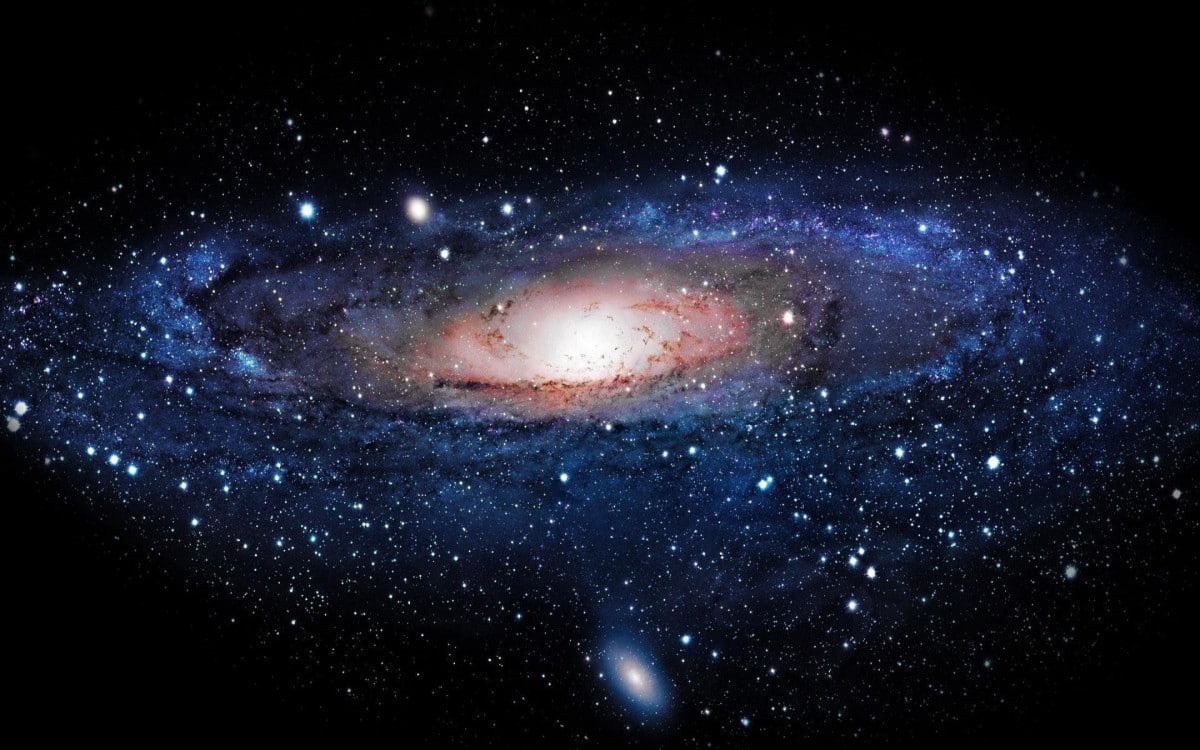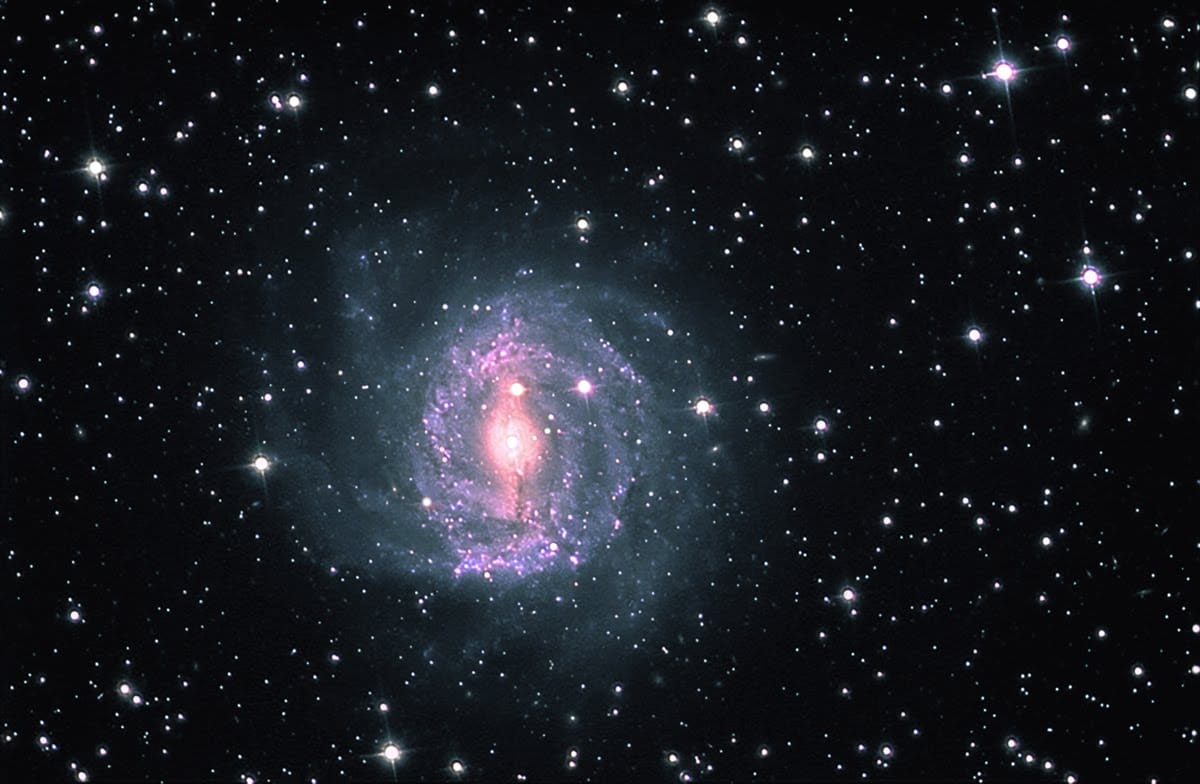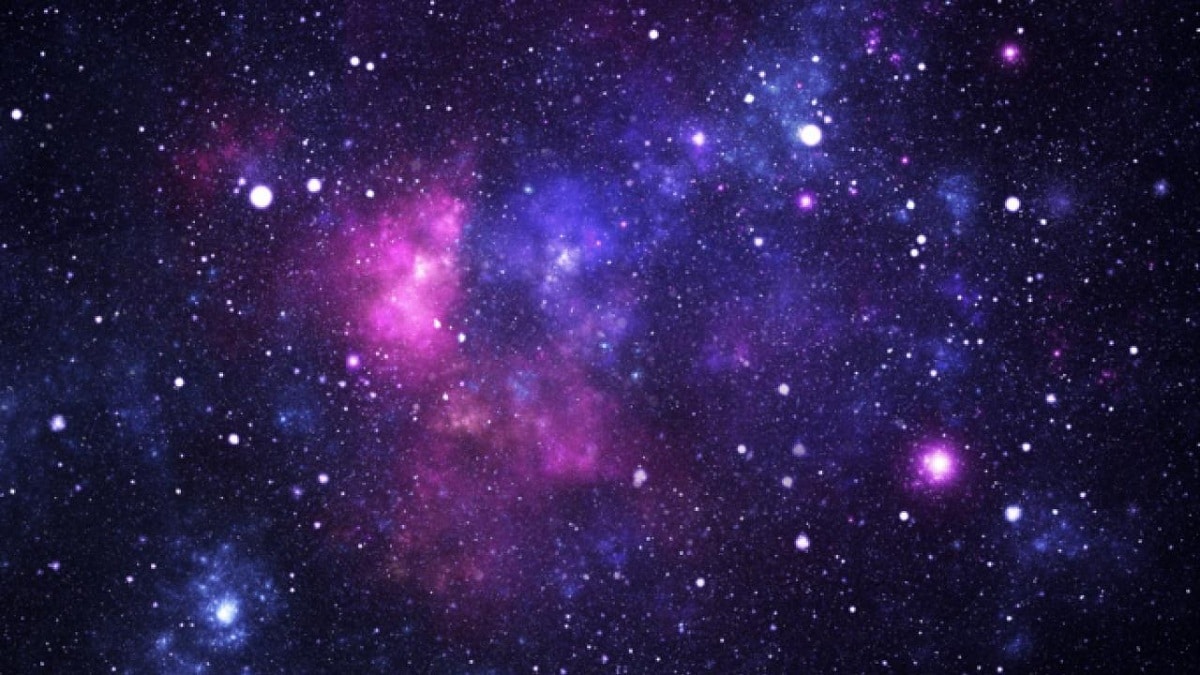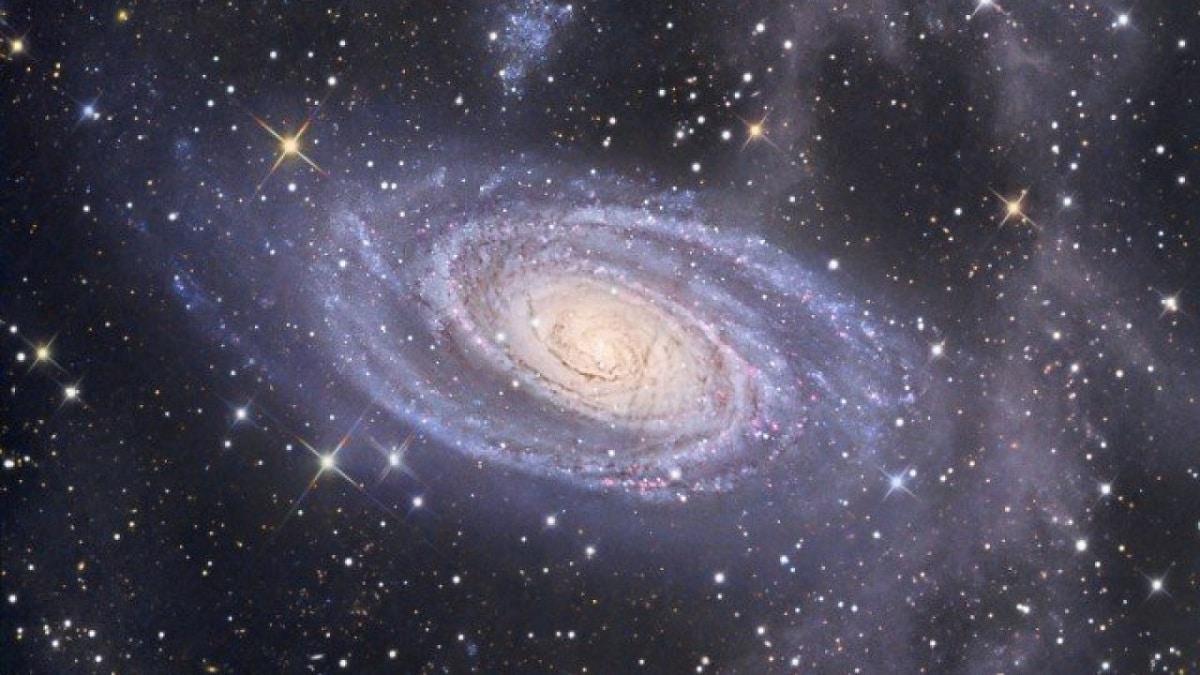
In the universe there are thousands of agglomerations of stars that have different shapes and host all kinds of celestial bodies. It's about the galaxies. When asked about what is a galaxyWe can say that they are large structures in the universe where stars, planets, gas clouds, cosmic dust, nebulae and other materials are grouped together or close by the action of the attraction of gravity.
In this article we are going to tell you what a galaxy is, what are its characteristics and types that exist.
What is a galaxy

It is a group or a huge agglomeration of stars where all kinds of celestial bodies are found, such as planets, nebulae, cosmic dust and other materials. The main feature that galaxies have is the attraction of gravity that holds all these materials together. Humans have been able to see galaxies throughout our history as diffuse patches in the night sky. Thanks to the development of technology we have and have more information about them.
Our solar system where the sun and all the planets are located is part of a galaxy known as the Milky Way. In ancient times no one knew what this whitish strip that crossed the sky was about and that is why they called it as the milk road. In fact, the names of the galaxy and the Milky Way come from the same origin. The Greeks believed that the stars were drops of milk sprinkled by the goddess Hera while feeding Hercules.
In the Milky Way we can find the formation of several stars and interstellar dust. The most notable are nebulae and star clusters. Presumably, they also exist in other galaxies. Galaxies are classified according to their size and shape. They range from dwarf stars with "only" tens of millions of stars to giant stars containing billions of stars. In terms of shape, they can be elliptical, spiral (like the Milky Way), lenticular or irregular.
In the observable universe, there are at least 2 trillion galaxies, most of which have diameters between 100 and 100.000 parsecs. Many of them are clustered in galaxy clusters and these are in super clusters.
Key features

It is estimated that up to 90% of the mass of each galaxy is different from ordinary matter; exists but cannot be detected, although its influence may be. It is called dark matter because it does not emit light. Currently, it is just a theoretical concept used to explain the behavior of galaxies.
Sometimes a galaxy zooms in on another galaxy and they eventually collide, but they are so large and swollen that there is almost no collision between the objects that formed them. Or, on the contrary, catastrophe can occur. In any case, because gravity causes matter to condense, fusion usually leads to the birth of new stars.
Galaxies existed in the universe long before the formation of the solar system. This is a system made up of multiple elements, such as stars, asteroids, quasars, black holes, planets, cosmic dust, and galaxies.
Types of galaxies

There are several ways to classify galaxies, but the most common is according to their shape.
- Elliptical galaxies: are those that have an elliptical appearance due to the narrowness they have along an axis. They are made up of the oldest stars commonly found in galaxy clusters. Of which we have known so far, the largest galaxies are ellipticals. There are also them in a smaller size.
- Spiral galaxies: They are those that have a spiral shape. It contains a kind of disc that was flattened and has arms around it that gives it its characteristic shape. In the middle part a large amount of energy is concentrated and they are usually composed of a black hole inside. All materials such as stars, planets and dust revolve around the center. Those with very long arms take on a more elongated shape that looks more like a barbell than a circle. In the center of these galaxies is where stars are thought to be born.
- Irregular galaxies: they do not have a clear morphology, but tend to have young stars that have not yet been located.
- Lenticular galaxies: they have a shape that is between spiral and elliptical galaxies. It can be said that they are discs without arms that have a smaller amount of interstellar material, although some may present a certain amount.
- Peculiar: just as the name suggests, there are some that have strange and unusual shapes. They are quite rare in terms of composition and size.
Origin and evolution
The origin of galaxies is still the subject of endless debate. According to the theory of the same name, astronomers believe that they began to form shortly after the Big Bang explode. It was the cosmic explosion that gave rise to the birth of the universe. In the post-explosion phase, the gas clouds coalesced and compressed under the action of gravity, forming the first part of the galaxy.
The stars can gather in globular clusters to make way for the galaxy, or perhaps the galaxy forms first and then the contained stars come together. These young galaxies are smaller than they are now and closer to each other, but as they collide with each other and become part of the expanding universe, they grow and change shape.
Most modern telescopes have been able to detect very old galaxies, which originated shortly after the Big Bang. The Milky Way is made up of gas, dust, and at least 100 billion stars. It is where our planet is located and it is shaped like a barred spiral. It is made up of gas, dust, and at least 100 billion stars. Due to the thick cloud of dust and gas that makes it impossible to see clearly, its center is almost indistinguishable. However, scientists believe that it contains a supermassive black hole, or similarly, a black hole with a mass of thousands or millions of solar masses.
I hope that with this information you can learn more about what a galaxy is and what its characteristics are.